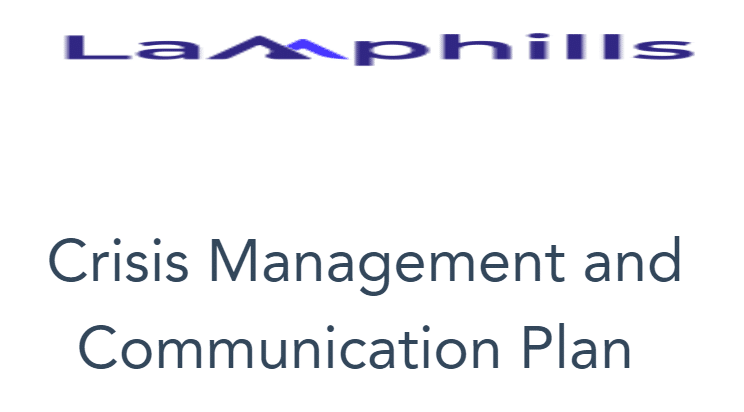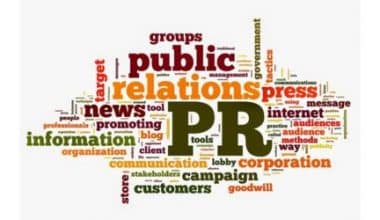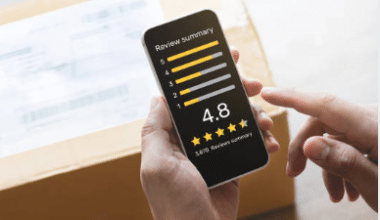You can build healthy relationships with the general public by maintaining a great reputation. However, if you have damaged your reputation through poor service, selling products, or bad customer service, that is where reputation recovery comes in. It is a way of setting things right to win back the trust of your clients, employees, and the general public.
In this article, I will show you how experts have overcome setbacks from negative PR. This article explains the value of having a positive reputation at work and provides a step-by-step method for effectively repairing your reputation.
Key Points
- Reputation recovery or repair are set of actions taken to resolve and help your business recover from negative PR.
- A reputation crisis can happen to any business, big or small.
- A reputation crisis can have a significant impact on a company’s bottom line.
- A crisis reputation management plan is crucial to deal with any issues that come up.
- Business reputation crises are difficult to recover from because it takes time to build trust
Before we look at reputation recovery, let’s first take a look at what a reputation crisis is.
What Is A Reputation Crisis?
A reputation crisis simply refers to a scenario in which a business (small or large) may have its reputation ruined or tarnished. This can happen when an employee has posted something controversial on social media, received negative online reviews, or leaked the company’s data to the public.
Furthermore, a reputation crisis may significantly impact the finances of your business because sales can drop and customers may lose faith in your products and services. Faith in the business might be undermined. Reputation crises can occasionally even be serious enough to force a company to shut down.
For example, on April 4, 2017, Pepsi Co. featured model Kendall Jenner in an ad. In the advertisement, Jenner exits a photo shoot and joins a protest scene. She then uses a Pepsi to diffuse the tension with a police officer. The ad presented itself as a “global message of unity, peace, and understanding” during the Black Lives Movement demonstrations. But a lot of people, including Martin Luther King Jr.’s daughter, attacked the company for trivializing protestors’ actual experiences. This led to a reputation crisis for Pepsi, which had to spend a lot of money to resolve the matter.
What Is Reputation Recovery?
Reputation recovery refers to the steps a business takes during a reputation crisis to repair relationships with stakeholders and rebuild trust and credibility with the public. It usually entails editing your content, eliminating content, hiding harmful stuff, and consistently releasing positive content.
Furthermore, reputation recovery is the struggle against all the bad things that damage your reputation in the first place. When handling content, keep in mind that your company’s reputation is based on your performance, not on your words. Customers need to feel confident in your ability to handle the current problem before they will stick with your brand. Here, you have to openly show how you’re going to solve the issue. In order for the company to survive the crisis, you must make sure that you keep to your word.
How Does A Reputation Crisis Happen?
There are many ways that your business may gain a negative reputation. I will also cite some real-life examples.
#1. Product Or Service Failures:
Customers may leave unfavorable reviews, file complaints, and eventually harm your reputation if your product or service falls short of their expectations.
For instance, in 2013, Burger King marketed it as a nutritious substitute for the signature French fries. However, Burger King did not adequately inform customers of the healthier recipe used to make their fries, even though they were still delicious. Additionally, the fries cost more than Burger King’s standard French fries and were not well-liked by customers. Less than a year after their debut, the business removed the fries in 2014.
#2. Through Scandals Or Controversies:
Any negative controversy that involves your business can swiftly harm your reputation. This can involve problems with the company’s leadership, moral dilemmas, or legal infractions. The public outcry over this controversy may potentially give rise to a phenomenon called review bombing.
In 2017, Uber was involved in multiple accusations of sexual harassment at the firm. Among the accusations were claims that senior employees had visited a Seoul brothel and made sexist comments. The claims hurt the price of the company’s shares, which were traded privately at the time.
#3. Social Media Blunders:
Your customers may now more easily than ever share their experiences with your brand thanks to social media. Negative reviews have the power to quickly harm a company’s brand if they go viral. If you want to limit the harm as much as possible, you’ll need to become an expert at responding to bad reviews.
The terrorist attack that occurred during the 2013 Boston Marathon will go down in history. Three people were killed when two improvised explosives went off. Adidas was insensitive to the situation, as the hurtful email they sent to participants following the race proves. The subject line of the email said,
“Congrats, you made it through the Boston Marathon.” This led to a huge social media backlash and boycott of Adidas products.
#4. Data Leaks Or Breaches:
Data breaches are now a big worry due to the volume of data that businesses are collecting. Your client’s reputation and customer trust may suffer in the event of a data breach.
In March 2024, Fujitsu acknowledged that malware was present on its corporate network, potentially leaving consumer data open to intrusion. The business did not reveal the type of data that may have been hacked or the number of impacted consumers in its original announcement.
After they discovered the malware, Fujitsu says it “immediately disconnected the affected business computer.”
Other reputation crises are:
- Negative reports regarding working conditions
- Recalls of products
- Unfavorable employee reviews on Glassdoor
- Customer reviews with one star on review platforms such as Yelp
- Managing the COVID-19 pandemic improperly
What Are The Effects Of A Reputation Crisis On Business?
According to the experts, a reputation crisis can cause your business to suffer financial losses, erode consumer trust, and harm your brand’s reputation.
The following are some of the effects of a crisis on a company’s reputation:
#1. You Lose Revenue:
Reputation problems may cause you to lose money since clients may decide not to do business with you. Customers may quit buying from you entirely, or they might move to one of your rivals. For businesses that depend on a small number of important clients, this could be especially harmful.
In September 2016, the fourth-biggest bank in the United States, Wells Fargo, was hit with a $185 million fine for opening fictitious credit cards and bank accounts.
The investigations revealed that staff members opened millions of accounts that their clients were unaware even existed.
#2. It Damages Your Brand Image:
A crisis in your reputation can harm the perception of your brand and make it more difficult for you to draw in new clients. Additionally, it can result in unfavorable media attention, which would harm your brand even more.
In 2018, H&M, a Swedish clothing company, faced criticism over an advertisement that showed a black child wearing a green hoodie with the words “coolest monkey in the jungle.” The ad provoked claims of racism. Celebrities like The Weeknd also cut ties with the company.
#3. Customers Will Lose Trust In You:
It can also weaken consumer confidence, which makes it more difficult for you to keep your current clientele. Consumers may begin to doubt your credibility and wonder about your business procedures.
In 2021, the records of more than 530 million Facebook members were exposed. Since the data was compromised in 2019, private information has been available on the dark web for two years. Consequently, Facebook has lost the trust of its users, who have given negative reviews of the platform.
#4. Legal And Regulatory Issues:
Legal and regulatory problems may also arise from a reputation crisis. For instance, you can be subject to fines or other penalties if it is discovered that your company is breaking any laws or rules.
Wells Fargo was hit with a string of inquiries and lawsuits by public and private entities, along with a congressional hearing. In addition to agreeing to a $3 billion settlement with the U.S., the bank also forced the resignations of CEO John Stumpf and head of banking Carrie Tolstedt.
How Do You Recover From A Reputation Crisis?
Here I will give you 10 steps to help your business recover from its reputation crisis. This also comes with real life examples of big brands that used the reputation recovery steps.
#1. Analyze The Level Of Damage.
When your business is experiencing a reputation crisis, determining the extent of the issue is the first thing to do. You should measure shifts in the company’s reputation, a decline in stakeholder and employee perception, and a negative attitude toward the business to gauge how serious the matter is.
Additionally, you should identify the individuals who bear direct responsibility for the occurrence during the initial review.
Keep in mind that social media and Google search results are good places to monitor the state of the brand problem. Non-media measures like share prices, profitability, and sales performance must also be recorded.
You can make use of social media intelligence tools like YouScan to help you monitor and identify images with your logo and photos of real-world scenarios where your items are being used, in addition to text mentions of your brand. It can also identify objects, scenes, people, and activities that are shown in these images.
#2. Reach Out To Your Stakeholders And Investors.
Secondly, you should communicate the impact of the current situation once you have a clear picture of it. The first group of people you should try to appease are major stakeholders in your brand, such as investors, customers, business partners, and other primary stakeholders. In this case, you should formally explain how the crisis came about and what steps you are taking to resolve it. Your ability to successfully engage key stakeholders will determine how well you can get the company back on track.
In July 2019, Twitter, now X, was used for cryptocurrency scams. Before using the press, they immediately communicated what had happened and their plans for handling the situation to all affected users in the community.
#3. Plan Your Media Communication Approach Carefully.
Changing public perception is the ultimate goal of every crisis-related reputation management plan. Part of this will involve leveraging the media, where brand leaders issue a public message and pick the ideal person to convey it. Since you’re defending your brand’s position in the court of public opinion, this might not be as simple as it sounds. For this reason, you need to comprehend the impact of your press release.
After the scandal, Adidas handled the PR disaster well by expressing regret, accepting accountability, and then making up for the earlier error with a masterful campaign.
If you ever find yourself in a scenario like this, remember Adidas as motivation. This serves as a reminder to keep a careful eye on all of your marketing initiatives.
Read the following articles in press release:
#4. Put A Lot Of Effort Into Effective Internal Communication.
In times of crisis, your employees are your brand’s greatest ambassadors. Therefore, you should make sure that all staff members are aware of the reputation crisis and its causes. Additionally, you want to give them the authority to accept remedial measures, which will help defuse the tense situation.
For example, in 2017, Uber posted an email it issued to its staff in reaction to the #DeleteUber campaign, in which the CEO promised impacted drivers financial compensation and denounced the travel prohibition.
#5. Modify Your Strategy For Responding On Social Media.
By taking charge of your social media channels, you can expedite the healing process of a negative reputation. This includes managing discussions on blogs connected to your website, social media accounts, review websites, and any other online forum.
You should issue an official apology on each of these channels. After the incident in 2018, the sweatshirt was taken off H&M’s online stores along with an apology. This is to make sure the brand takes into account the various cultural perspectives of its international sales markets.
Read Also: Best Social Media Customer Service Practices for 2024 (Detailed Guide)
#6. Be Transparent.
Reputation recovery is a struggle against all the bad things that damage your reputation in the first place. Customers need to feel confident in your ability to handle the current problem before they will stick with your brand. Here, you have to openly show how you’re going to solve the issue.
Wells Fargo launched two reputation recovery campaigns and redesigned its logo to regain the trust of investors and customers. This is to offer significant adjustments to the company culture as well as risk management and transparency.
#7. Restore Your Fundamental Business Value.
This is where you communicate with the public to highlight your key principles. You should remind your customers of the steps the business has taken over the years to achieve its current level of success. The most important thing in this situation is to reassure clients of your dedication and demonstrate the steps you have taken to guarantee future success.
I will recommend that you consult an expert PR agency like Lamphills that will help to issue the right statements reflecting your values at the right moment.
#8. Look To The Future
There’s one more thing to do after the PR issue has passed, and everyone is relieved and eager for things to get back to normal. This is the time to plan for the future of your business. The crisis should present a chance to evaluate long-term brand reputation management strategies.
In the words of Delia Mendoza;
“Act: Advise on the next steps the person or the company will take to make it right. Share what you’ll do in the future so that this never happens again. This assures the public that you have control of the situation and are working to remedy it,”
What Is Reputation Repair?
A reputation repair strategy is a focused digital marketing technique that aims to enhance and restore the online reputation of a company or individual. It is the art of influencing, regulating, promoting, or hiding negative feedback on your business reputation. It was first used in public relations. PR firms make use of the internet and social media, with search engine results, to repair businesses’ reputations.
How To Repair Your Reputation Online?
#1. Identify The Source Of The Crisis
You must first determine the causes of the harm before you can begin to mend your internet reputation. You must find out if your customers are posting negative reviews on social media or on review sites.
This can be challenging, but you can make use of media monitoring software like Brand24,
#2. Determine The Cause Of The Harm To The Reputation.
It’s time to examine the subjects that can harm a brand’s reputation now. To do that, you must know the topics of the conversations your target audience is having.
There are online reputation systems that can examine mentions and compile a list of the most discussed subjects.
#3. Locate The Influencers That Lead The Negative Discussion
These individuals have the power to alter public opinion and ignite a social media firestorm. You should look forward to interacting with them to clarify any misunderstandings that they may have with you.
#4. Track Negative Reviews
You must keep an eye on reviews on sites like TripAdvisor, Yelp, Booking, Google Play, App Store, Trustpilot, and so on.
These websites have customer reviews that can affect the way people view you online.
#5. Address The Negative Reviews.
When you react to online criticism, it shows people that you pay attention to their feedback. This can help repair your business reputation.
You can make use of software that automatically finds and evaluates unfavorable content on blogs, new websites, social media, and other internet sources.
#6. You Should Address False Information
Misinformation can harm your products online, and you must address any incorrect information that circulates online because of this. Therefore, your customer service team or PR team should swiftly reply to misleading information with professionalism and composure.
#7. Encourage Your Customers To Leave Positive Reviews.
There are PR services that can manage your online reputation and promote favorable reviews. These positive reviews will improve your brand’s reputation as they show the public that your customers are content and happy with your business.
Check out these crisis management and reputation recovery templates for your business.

How Much Does Reputation Repair Cost?
Clients pay an average of $2,500 for a three-month campaign to $10,000–$15,000 for a project with a lot of emphasis that lasts six months or more for reputation recovery or repair.
How To Recover From A Reputation Crisis?

To recover from a reputation crisis, you should follow the steps below:
- Analyze the level of damage caused.
- Focus on strong internal communication.
- Adjust your social media response plan.
- Maintain transparency when handling public issues.
- Reinstate trust and core corporate values.
- Look into the future.
How To Repair Your Work Reputation?
Follow the steps below to repair your reputation at work:
#1. Show accountability for your professional conduct
#2. Offer an apology
#3. Make and show commitment to learning.
#4. Try to accommodate the needs of your colleagues and supervisors.
#5. Focus on rebuilding relationships
#6. Look for mentorship
#7. Work on your interpersonal skills
#8. Show a positive attitude to work
#9. Consider other ways to carry out additional responsibilities to show your commitment to your job.
#10. After apologizing to your colleagues, you should learn from your mistakes, and give your full attention to your future projects.
How Can Reputation Be Improved?
To improve your reputation, you should boost internal variables that are under your control, such as customer service, corporate culture, product quality, and staff satisfaction.
Can You Regain Your Reputation?
Yes, you can regain your reputation, even though reputation recovery can be challenging. Thus, you must increase your level of personal resilience and plan for long-term goals.
Related Articles:
Best Steps To Effective PR Crisis Management
Building an Effective Crisis Management Plan for Your Business
CRISIS COMMUNICATION: Definition and Best Strategies






